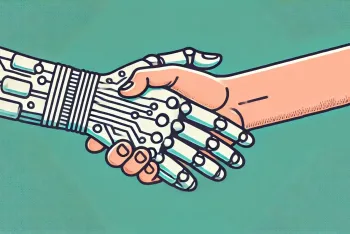Matching the Process to Your Project

At the outset of every project, we work with our clients to clearly understand the challenges and establish the objectives. As we begin to collaborate with internal stakeholders and dig deeper into strategy, however, new information often arises with potential implications.
From design refreshes to deeper technical considerations, how we proceed depends on the methodology we agreed to follow from the outset: Waterfall, Agile or a hybrid of the two.
Waterfall
Traditional Waterfall project methodology relies heavily on detailed and comprehensive planning at the outset. By defining scope, timelines, and budgets extensively in the beginning, Waterfall aims to provide a clear and predictable roadmap for the entire project. This upfront clarity helps ensure that all stakeholders are aligned and that there are fewer surprises during execution.
Waterfall is particularly effective for straightforward projects with minimal technical complexity and clearly defined requirements that are unlikely to change significantly. It is also good for teams with limited availability for participation and iteration.
When changes do arise, Waterfall uses a structured process to manage them. Deviations from the agreed-upon scope, timeline, or budget are handled through change orders. These documents detail the nature of the change, its impact, and any associated cost and schedule adjustments. Although negotiating, documenting, and approving change orders can be time-consuming, this structured approach ensures that all changes are thoroughly vetted and managed.
Agile
The heart of Agile methodology lies in its iterative process. It thrives on continuous learning and adaptation, ensuring the project can evolve alongside emerging needs and insights. Generally, Agile is an excellent fit for projects such as integrations or complex search implementations, where technical possibilities play a crucial role in making strategic decisions.
In Agile, the upfront planning process is streamlined to focus on a high-level understanding of the solution and priorities. This frees up time to explore and make informed decisions along the way. Collaboration is key throughout the project among internal subject matter experts, architects, developers, and designers. While more time-consuming for a client, the synergy yields powerful insights. By embracing this learning loop, Agile incorporates ongoing input from the client to deliver a product that is inline with prioritized requirements. It can also lead to a stream of new ideas and, ultimately, a more refined, effective solution.
Hybrid
In a hybrid approach, we begin our preliminary planning and design in a linear, Waterfall fashion to ensure we’ve built a shared understanding of the work ahead. Once the core functionalities and design direction are established, and we have a firmer understanding of the resources and timeline required, we transition to a more Agile approach for development. This allows for iterative development in sprints, where features are built, tested, and refined based on feedback.
In summary
Determining what approach is best for a given project is dependent on numerous factors. Waterfall can offer predictability while Agile can be more innovative and responsive to changes as they occur. A hybrid approach can blend the two.
With our experience across projects of every kind - from large to small and design-focused to highly technical - we work with clients to assess project complexity and consider inputs such as budget flexibility and team availability before making a recommendation. Contact us about your project so we can work together using an approach that works for you.


